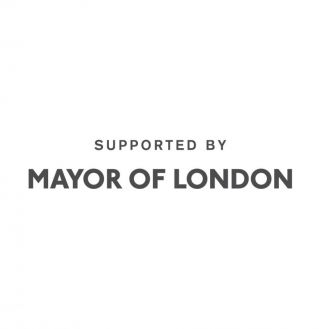New London Architecture
Big data - driving change in London and Chicago
Tuesday 19 February 2019

London and Chicago can learn a lot from each other on how to collect and disseminate data for the benefit of the cities and their citizens. But they must do so in an open and innovative way that avoids accusations of Big Brother and improves places and spaces for all.
Those were some of the sentiments to emerge from ‘Big Data and the Design of Cities’, an NLA International Dialogue between the two cities held simultaneously at the Chicago Architecture Centre and NLA last week.
NLA chairman Peter Murray said the event was particularly appropriate given Chicago mayor Rahm Emanuel’s visit to London this week to see Sadiq Khan, the City, and give a lecture in the UK capital. Chicago is undergoing one of the biggest collections of real time data urban environment, infrastructure and activity, while London is developing the Smarter Together roadmap to try and become the smartest city in the world.
In Chicago, Array of Things founder Charlie Catlett said his firm has developed high tech sensors to be blanket-installed across the city to measure how it is performing against a series of indicators. These include not just air quality, but also such things as the ‘stickiness’ of a place or movement of people through it – or even movement of vehicles and near-misses through an intersection. So far, 100 of these camera- and microphone-boasting monitors have been installed, with 100 more to go up in the next few weeks, but which are covered by an extensive privacy policy and open and free data available to anyone who might be interested in making it legible to different communities. ‘
We would say this is not the city watching you.’ ‘This is you watching the city’ Charlie Catlett
Dr Stephen Lorimer, Smart city Policy and Delivery Officer at the GLA said that compares to his previous incumbent Boris Johnson, Sadiq Khan ‘wants a more collaborative connected and responsive city’, principally through data innovation. London made contactless payments viable before the rest of the world through TfL’s adoption of the principle as standard, he added, while the Roadmap includes ambitions to collaborate more effectively on data analytics across the boroughs, and other work includes the creation of smart lampposts with sensors and 5g connectivity.
KMPG director of analytics Tom Schenk said that open data was a ‘long, deep and surprising story’ and Chicago is a place where some 600 data sets are available to the public, including about crime statistics, every bike share or cab trip and a host of other sets. But the most popular is that concerning the council’s own employees and their salaries.
‘Sometimes it is not always the things that are large that are most enthralling, sometimes it is simply governed by general nosiness, or being easily digested.' Tom Schenk
It is thus important to allow the public access to information in an easily digested accessible, transparent way using dashboards or other visual tools.
The data must also be used to improve the health and wellbeing of Chicagoans, said Schenk, partnering with other organisations, city agencies and research institutions.
Finally, Polly Hudson, doctoral researcher at The Bartlett Centre for Advanced Spatial Analysis, showed the Colouring London project, which is collecting data on London’s 3 million buildings in an open platform designed for any city to use.
‘Building stocks are a city’s most important socio economic and cultural resource, but information about them is highly fragmented – how do you bring this data together?’ Tom Schenk
There has been a ‘paradigm shift’ in construction from new build to re-use, driven by energy legislation so there is an urgent need for data analysis on energy efficiency.
The discussion heard from Eman Martin Vignerete, head of political affairs and government relations at Bosch UK who said it was interesting to note how much data is collected from assets that are already available, such as the average car, which has around 600 sensors collecting data about behaviour, petrol consumption, and so on, but which is inaccessible. We collect a similar amount from domestic housing, similarly, with data available from washing machines and other appliances, but mistakes were still being made on things like car provision in new settlements.
It also included Shaina Morphew Doar, head of city operations at Sidewalk Labs, who spoke about how we are using data to integrate into our physical spaces, from the streets of the future in terms of autonomous vehicles to what happens in buildings and the future of sustainability, but it was a case of learning as we go. ‘We think it’s really important to think about data as it relates integration with the physical environment’, she said. ‘It has to always be about improving the quality of life’.
It also included Shaina Morphew Doar, head of city operations at Sidewalk Labs, who spoke about how we are using data to integrate into our physical spaces, from the streets of the future in terms of autonomous vehicles to what happens in buildings and the future of sustainability, but it was a case of learning as we go. ‘We think it’s really important to think about data as it relates integration with the physical environment’, she said. ‘It has to always be about improving the quality of life’.
Related
News
Elevating London: A Vision for the Future of the Capital’s Built Environment
Federico Garcia Parra reports on Otis’ panel at 22 Bishopsgate, where industry leaders explored London’s planning future...
News
Architecture and Engineering Firms: It’s Not a Cash Flow Problem
Many owners of architecture and engineering firms believe their biggest challenge is cash flow, some citing client payme...
News
London’s New Towns will define its next chapter for housing and growth
The New Towns Taskforce report marks a pivotal moment for housing and planning in England, setting out that meeting dema...
Stay in touch
Upgrade your plan
Choose the right membership for your business
Billing type:
Small Business Membership
£90.00
/month
£995.00
/year

For businesses with 1-20 employees.
Medium Business Membership
£330.00
/month
£3,850.00
/year

For businesses with 21-100 employees.
View options for
Personal membership










